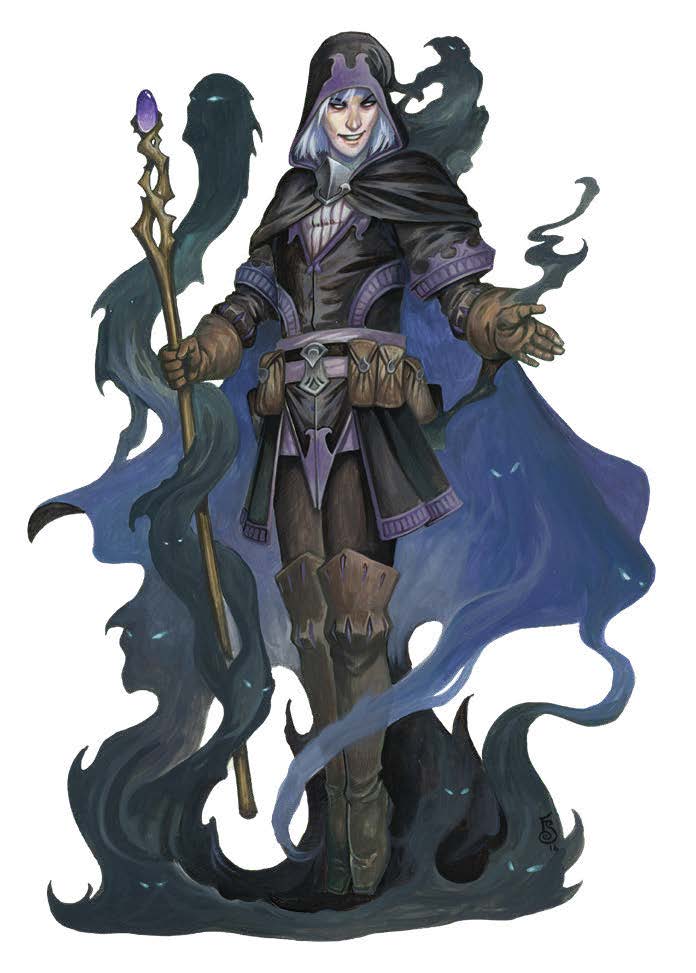
GM: You enter the cave and see three large, ugly ogres.
Rogue: I sneak up on them quietly to get surprise.
Barbarian: I charge toward them with my war cry while swinging my axe!
Wizard: I cast fireball!
GM: Umm…
You’ve introduced your group of new players to the rules of the game, and they’re excited to create their first characters. They all look through the rulebook and create a fighter, a barbarian, and two paladins. Sure, they’ve all created a character according to the rules and have even written up some personalities to make these characters individuals. That’s great, but most RPGs aren’t games of individuals but instead built for a group. It’s your job as the GM to encourage not just strong individual play but to encourage the group to work as a team. The first place you’ll need to emphasize this is in character creation.
Encouraging Teamwork
This is another great reason to have a session zero. Recall that a session zero is the first session of a campaign. It’s best to have the players not create their characters in advance but during this first session. Suggest that they bring a couple of ideas for characters to the first session but that they also strive to be flexible. Early on in that first session, go around the group and ask each player what they believe is important for a successful team. Make sure to use the term team instead of party to encourage that the game is built around teamwork. If you let this conversation continue for a bit, they’ll eventually arrive at the idea that a successful team is often a diverse set of character types.
After this, you can let them “pitch” their ideas for characters to each other. It should be apparent that the idea of a sneaky criminal type will be in conflict with a group of devout do-gooders. The first requirement for a successful team is that they can get along with each other. They don’t need to all be alike, but they should strive to avoid major conflicts. Next, they should decide if their character types mesh with what they’ve discussed as elements of a successful team. If they’ve decided a successful team needs a healer or a rogue, hopefully some player has taken up the challenge and filled this slot.
Considering Encounters
That helps with the first element of teamwork: building the team. The players still need to learn to work together. You can aid this by the way you set up each encounter. In the case of a combat encounter, it might be best to avoid springing monsters on them, for they will likely act as suggested above with each taking their own optimal action as individuals without contemplating how it affects the team as a whole. To encourage teamwork, let the characters see the encounter coming ahead of time. If you set up the encounter so that the characters see the ogres in a clearing from a neighboring hilltop, you can then prompt them by asking, “What’s the team’s plan?” This reinforces the idea that they should each suggest an overall plan of attack and then the individual characters should stick to it.
You can also encourage the idea that characters don’t exist in a vacuum by simply summarizing another character’s action when framing the next player’s turn.
“The rogue just snuck around to gain an advantageous position behind the ogres. Ok, wizard, how would you react?”
This way you aren’t suggesting any action to the wizard’s player. You are only reminding them that their actions are all a part of something larger.
Playing to Strengths
These methods are usually enough to encourage teamwork. If your players are still drifting apart and acting separately, you can design encounters that will spotlight individual character’s talents. Maybe that large iron door is locked and only the rogue can open it. If you’ve got a wizard with an itchy fireball finger, design a room that plays into that spell’s restrictions. Perhaps a 40-foot-wide room of ice demons? Maybe the team comes to a ridge where they can see a group of villains on a ridge 60 feet away, so the ranger’s longbow is suddenly a great asset. Or a large troll grapples the barbarian until they fight free. Then after this successful series of encounters when the team has defeated the villain and rescued the captured villagers, the town rewards the team as a whole, not as individuals. These simple steps will encourage teamwork in new players that they will carry with them through their later adventures.
As a GM, you can’t force players to play their characters a certain way, and you shouldn’t try to either. But the way you set up challenges and situations can encourage positive play through teamwork.

Great suggestion on subtly reminding the players throughout encounters that they are a team!